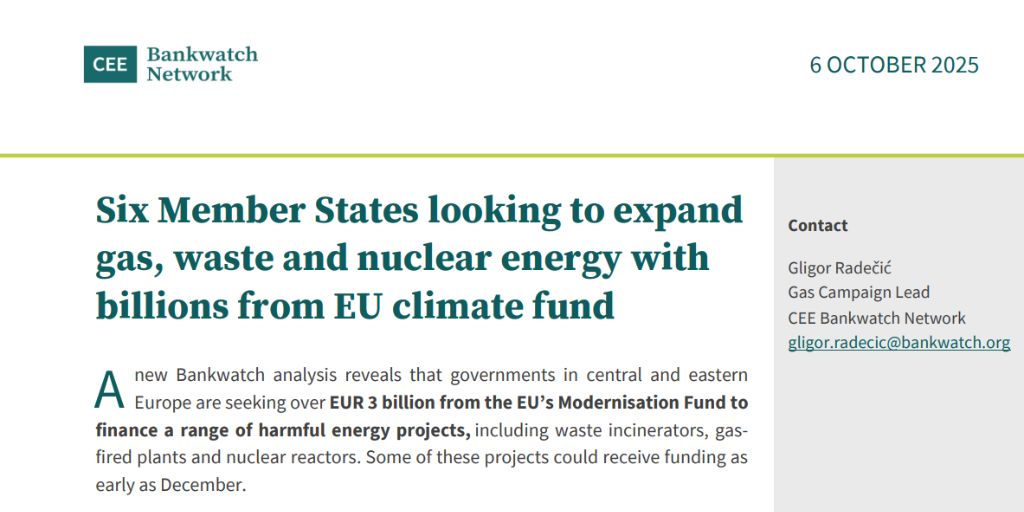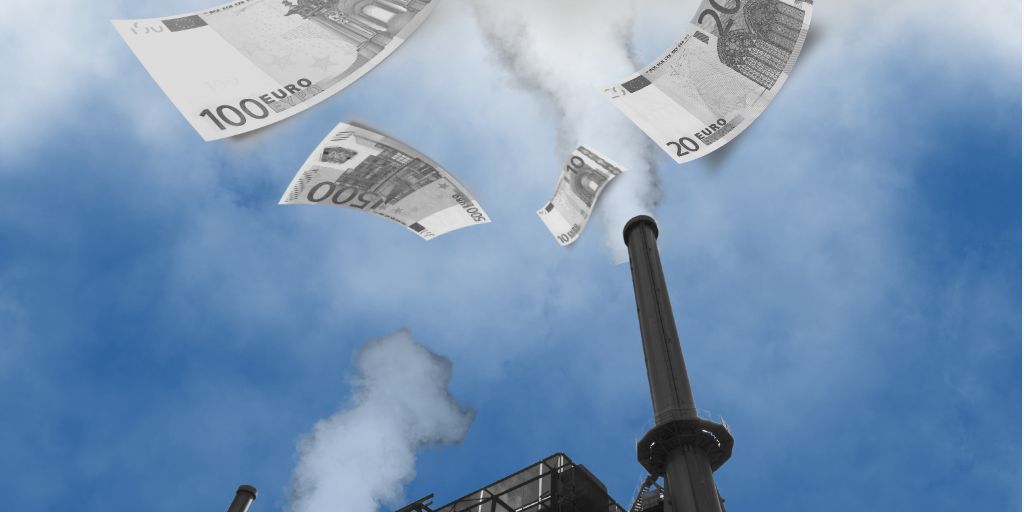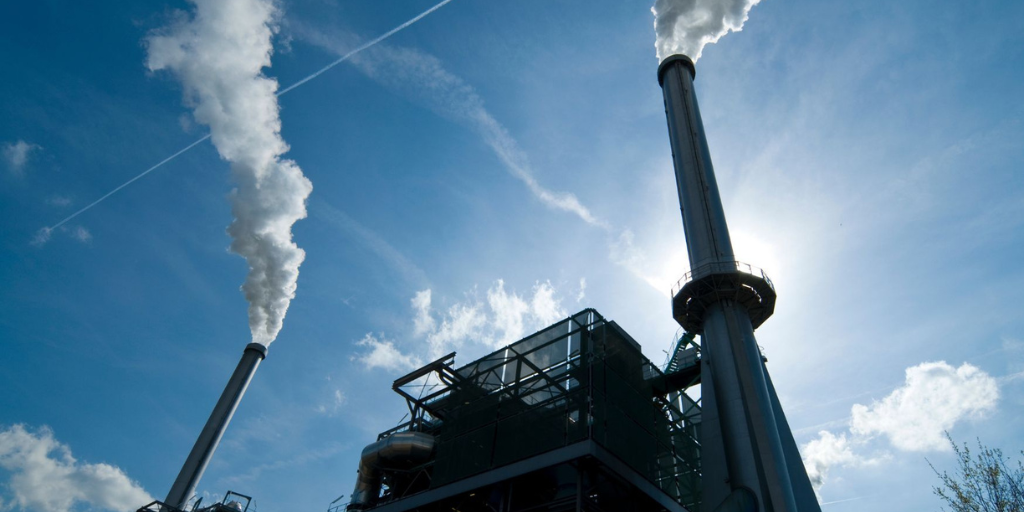Time to fix the Modernisation Fund: Stop climate money for dirty energy
Europe must accelerate its transition to clean energy. Yet the Modernisation Fund, a key EU climate fund financed by carbon market revenues, is channelling billions into the expansion of fossil gas, waste incineration, and biomass combustion, all of which undermine the very purpose of the Fund – to create sustainable energy systems.
The Modernisation Fund was established to catalyse the energy transition in 13 lower-income EU Member States by investing revenues from the EU Emissions Trading System (EU ETS). However, a Bankwatch report released in May 2025 reveals that during its first four years of operation (2021–2024), the Fund allocated at least EUR 4.2 billion – over 25 per cent of its investments – to dirty energy infrastructure, including fossil-gas pipelines and power plants, waste incinerators, and biomass-burning facilities. The true figure could be higher depending on national allocations.
Even more troubling, governments are seeking yet more climate money for fossil fuels and false alternatives. As of May 2025, EUR 42 billion is still on the table, with managing authorities in several beneficiary Member States already signalling their intent to seek billions more for carbon-intensive energy projects through the Modernisation Fund.
Breakdown of Modernisation Fund financing 2021 to 2024 by investment category share (according to Bankwatch categorisation)
For more, see our report: Keeping the flame alive with emission revenues: How the EU Modernisation Fund props up fossil gas and waste incineration (May 2025)
A closer look at Modernisation Fund investments:

Six Member States looking to expand gas, waste and nuclear energy with billions from EU climate fund
Publication | 6 October, 2025Intended to drive the energy transition in the EU’s lower-income Member States, the Modernisation Fund has been doling out billions to fossil gas and other harmful energy infrastructure.
Read more

Keeping the flame alive with emission revenues: How the EU Modernisation Fund props up fossil gas and waste incineration
Publication | 8 May, 2025In operation since 2021, the Modernisation Fund was designed to channel EU emission trading revenues into investments in the energy transition in 13 lower-income Member States.
Read more

Closing the door on waste incineration for district heating in central and eastern Europe
Publication | 2 December, 2024Member States and public financing must align with EU principles and avoid investments that lock them into unsustainable practices like waste incineration.
Read more
How can the Modernisation Fund truly serve the energy transition?
1. Align Modernisation Fund investments with EU climate, environment, and energy goals
To demonstrate a measurable contribution to emissions reductions, the Modernisation Fund must align its spending with the EU’s long-term climate goals. By allocating EU money to infrastructure projects and investment schemes, the Fund has already made important contributions to boosting energy efficiency and deploying renewable energy sources.
The Modernisation Fund remains one of only a handful of funding instruments dedicated to facilitating the energy transition. That’s why for the EU’s less affluent Member States, this financial support is essential for overhauling their outdated energy systems.
And this is where the Fund’s governing bodies have a key role to play. They must ensure this money doesn’t end up perpetuating the EU’s dependence on expensive fossil gas or unsustainable energy alternatives. Instead, they need to ramp up investments in energy efficiency, grid upgrades, energy storage and, more broadly, the decentralisation of energy systems.
But despite revised rules in force since January 2024, fossil-gas projects are still eligible for support under the Modernisation Fund. It’s also effectively the last EU fund that still allows financing for waste incineration.
The European Commission’s Directorate-General for Climate Action (DG CLIMA) must ensure that the Modernisation Fund no longer supports fossil gas, waste incineration, or biomass combustion. To achieve this, DG CLIMA must reassess the eligibility of these energy sources and draw up a clear roadmap for eliminating them from the Fund.
It also needs to introduce a binding emissions reduction threshold as a key requirement for all potential investments and make sure the Fund is guided by a robust emissions accounting methodology for evaluating prospective investments. Introducing these steps would prevent most unsustainable energy projects and schemes from qualifying for Modernisation Fund financing.
2. Apply the ‘do no significant harm’ principle
The EU’s ‘do no significant harm’ principle is meant to ensure EU public money does not cause environmental harm, including exacerbating the climate crisis. Starting in January 2025, this principle should also be applied to Modernisation Fund investments. However, it remains unclear how this rule will be implemented, as the European Commission has yet to provide guidance to beneficiary countries.
To prevent EU climate money from inadvertently aggravating the climate and ecological crises, DG CLIMA must urgently develop clear, enforceable guidelines for implementing and applying the ‘do no significant harm’ principle to all Modernisation Fund investments.
3. Leverage the authority of the Modernisation Fund’s Investment Committee to prevent climate money from being wasted on fossil-based energy and false alternatives
The rules governing the Modernisation Fund – specifically Article 7(7) of the Investment Regulation – empower the Fund’s Investment Committee to withhold recommendations for financing investment proposals that fail to meet the required conditions.
Members of the Investment Committee should use this mandate to reject any investment proposals that include fossil gas, waste incineration, or biomass combustion. This will ensure the Fund supports only sustainable, climate-friendly investments.
4. Ensure managing authorities prioritise sustainable energy across all Modernisation Fund investments
Managing authorities in beneficiary Member States are responsible for selecting and proposing investments for Modernisation Fund financing. So far, managing authorities in several countries – chiefly in Romania, the Czech Republic, and Poland – have proposed far too many investments that rely on fossil gas and unsustainable energy. They urgently need to shift their priorities.
To move energy systems away from fossil fuels, managing authorities must prioritise sustainable energy investments. One way they can do this is by pitching more proposals that genuinely support sustainable energy projects.
In addition, national agencies must proactively support renewable energy providers to help them access EU climate money. Specifically, a significantly higher share of Modernisation Fund investments must be dedicated to grid upgrades, renewable energy initiatives, and energy storage solutions to accelerate the sustainable energy transition.
5. Democratise EU climate financing
Although the Modernisation Fund plays a vital role in the energy transition, it remains virtually unknown to most Europeans. Stakeholder participation in the Fund varies widely from one beneficiary country to the next.
And in many cases, members of the public – including communities potentially affected by energy infrastructure or investment schemes enabled by the Fund – have little or no say before decisions are made.
In fact, they’re often unaware of the very existence of these schemes. At present, crucial information about projects being considered for Modernisation Fund backing is typically inaccessible to the public until after investments are approved.
To address this unacceptable gap, DG CLIMA and national managing authorities must make both the decision-making process and the implementation of these investments far more transparent. Involving the public in the allocation of funds – and offering a better overview of national spending – would significantly improve the selection and implementation of these investments.
The European Commission must revise the existing rules on stakeholder participation in beneficiary Member States to include, at a minimum, clear provisions on consultation timelines, the composition of stakeholder groups, and how comments are taken into account.
In tandem, national authorities must establish monitoring committees to ensure civil society has a say in how the Fund is disbursed. They also need to release information about national allocations to disbursed schemes and publish a more comprehensive overview of how these resources are actually spent.
Time to truly modernise
The Modernisation Fund can make a big difference. Redirecting future spending away from polluting energy sources while increasing support for sustainable energy investments would help Europe reduce emissions, slash air pollution, cut energy bills, improve energy security, and end the EU’s dependence on authoritarian regimes. To realise its potential, the Modernisation Fund needs to reform.
But will the EU seize the opportunity or leave its citizens to suffer the consequences?
Latest news
EU climate fund commits over half a billion to fossil gas expansion
Press release | 18 December, 2025Several fossil gas and waste incinerator projects eyed by EU Member States have rightly been excluded from the latest Modernisation Fund investment round. But gas-fired power plant projects in Czechia and Bulgaria have secured a total of EUR 630 million in future financing.
Read moreEU climate fund shrinks support for dirty energy
Press release | 4 July, 2025In its largest investment round to date, the EU’’s Modernisation Fund extended support to multiple schemes and projects to advance the energy transition, but damaging projects still get a slice.
Read moreEU’s Modernisation Fund continues to fund fossil fuels and waste incineration projects, undermining climate and environmental goals
Press release | 20 December, 2024The European Commission yesterday announced the disbursement of EUR 2.7 billion from the EU Modernisation Fund to support 39 investment projects across eight Member States. However, CEE Bankwatch Network’s analysis shows that a significant portion of this funding is being disbursed to projects that contradict the EU’s climate and energy targets for 2030.
Read moreRelated publications
Six Member States looking to expand gas, waste and nuclear energy with billions from EU climate fund
Publication | 6 October, 2025Intended to drive the energy transition in the EU’s lower-income Member States, the Modernisation Fund has been doling out billions to fossil gas and other harmful energy infrastructure.
Read moreKeeping the flame alive with emission revenues: How the EU Modernisation Fund props up fossil gas and waste incineration
Publication | 8 May, 2025In operation since 2021, the Modernisation Fund was designed to channel EU emission trading revenues into investments in the energy transition in 13 lower-income Member States.
Read moreThe Modernisation Fund in central and eastern Europe
Publication | 13 December, 2022This briefing gives insights into the Modernisation Fund, a funding programme to support 10 lower-income EU Member States in their transition to climate neutrality by modernising their energy systems and improving energy efficiency.
Read more